Spanish Halloween? A Guide to the Day of the Dead (Día de los Muertos)
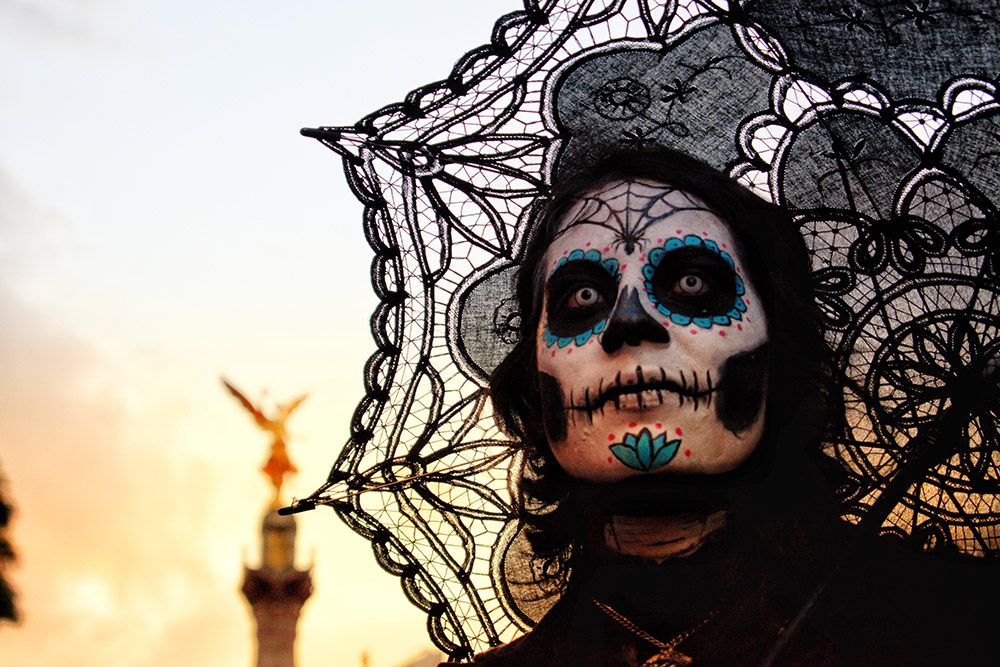
The death day is coming soon! As a Spanish language learner, have you planned to step up your vocabulary in order to prepare? How about giving describing these scary images a try, or else...
What Is The Day of The Dead?
The ancient Aztec culture had a tradition of honoring the dead dating back thousands of years, along with the symbol of the skull serving a ritualistic importance. In those times, and up until the arrival of Spanish conquistadors in the 15th century, this holiday was actually celebrated the whole month of August.
After Spanish colonialization, many things in Mexico and all of Latin America changed, The Day of The Dead included. In Spain they celebrate All Saints' Day and All Souls' Day, where there are many traditions of honoring the dead, such as cleaning the gravestones of beloved ones. The main day is Novemeber 1st, which is a public holiday, although the whole holiday is technically from October 31st until November 2nd.
The old traditions of Día de Muertos in Mexico, The Day of The Dead, were moved to the same days and melded with the new Christian beliefs, the principal day being November 2nd. However, no one can dispute that the Mexican celebration of The Day of The Dead is the more colorful and iconic of the two festivities. Halloween is also a mixture of traditions, the old Celtic and the Christian, thus presenting many similarities with The Day of The Dead.
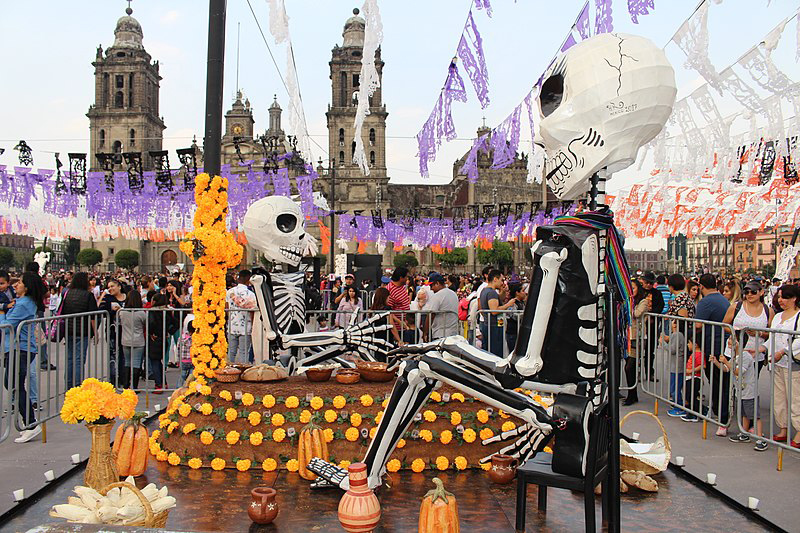
How Do Mexicans Celebrate The Day of The Dead?
Here are some key parts of the celebration in Spanish, followed by their translation and meaning.
- alma - soul
The belief is that the souls of loved ones come back only on The Day of The Dead. - difuntos - the deceased
A softer way of saying "the dead". - cementerio - cemetery
Visits to the cemetery at night are realized by entire families in order to welcome back the spirits. Sometimes they even play live versions of their favorite songs next to their gravesites. - vela - candle
Families light candles to show the path back to their house and also use them to light up the altars inside the home. - ofrenda - offering
If the soul of your grandpa comes back, he's probably going to want his favorite food or drink, right? That's why people put a wide range of objects on the altar as an offering, for the spirits of their family and friends.

- comida - food
One popular offering is Pan de Muerto (Bread of the Dead, pictured above), although the living are allowed to enjoy it as well. - mascara - mask
People dress in costumes, commonly using masks with skull or devil designs. - retrato - portrait
To complete the altar, a portrait of the fallen family members is usually displayed. - calavera - skull
The skull, in general, serves as a symbol of death, but is also the shape of an egg yolk based sweet that is passed around amongst friends during the holiday.
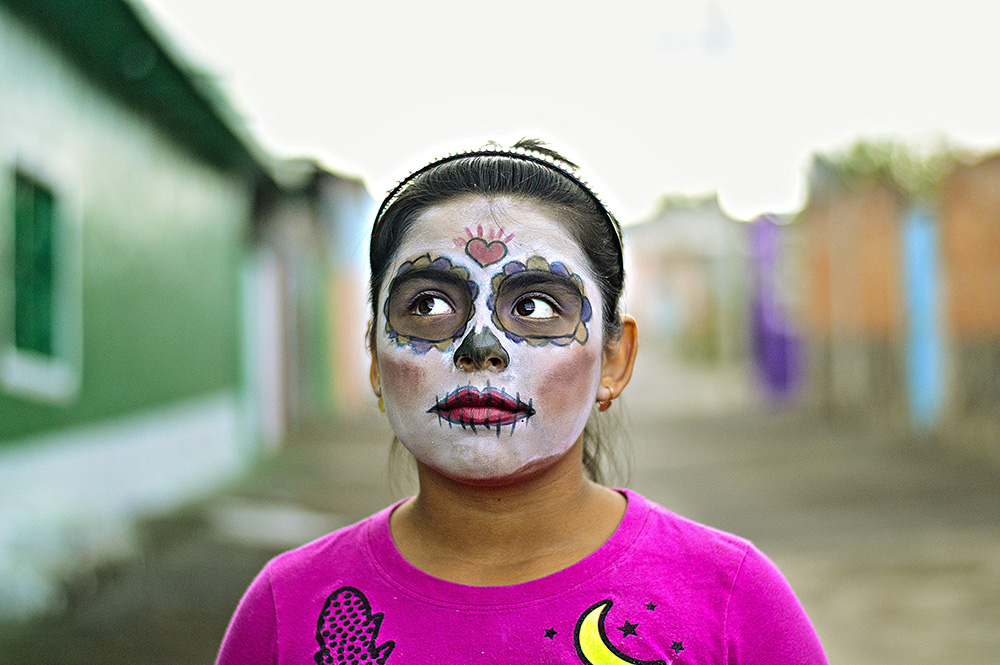
Try to Describe These Photos in Spanish
The Day of the Dead is an eye-catching spectacle and a huge photo opportunity. On many different Spanish tests you may have to describe a photo, so let's try to give a half minute description of each of these spooky photos in Spanish. Focus on using a vocabulary word from above. An example of a good description follows each photo, but try yourself first without looking!
EXAMPLE 1
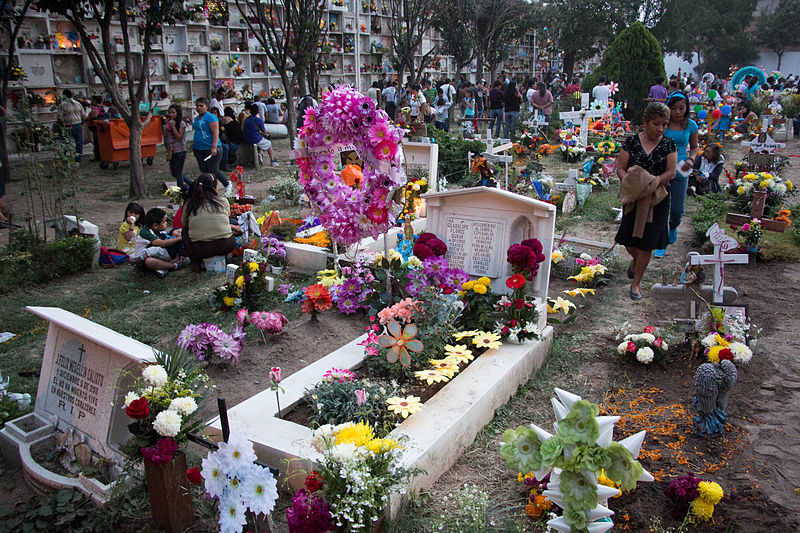
La foto nos muestra un cementerio durante el día. Las tumbas están adornadas con muchas flores. Alrededor de las tumbas andan familias, incluso hay un gran grupo al fondo. La mujer que se ve por el derecho de la foto mira el suelo y parece que está pensando profundamente. Existe en el aire un sentimiento melancólico, mientras que la gente se acuerda de los difuntos.
The photo shows us a cemetery during the daytime. The graves are decorated with many flowers. Families walk around the graves, including a big group in the background. The woman that is seen on the right side of the photo looks at the group and seems to be deeply thinking. There is a melancholic feeling in the air, while the people remember the deceased.
EXAMPLE 2
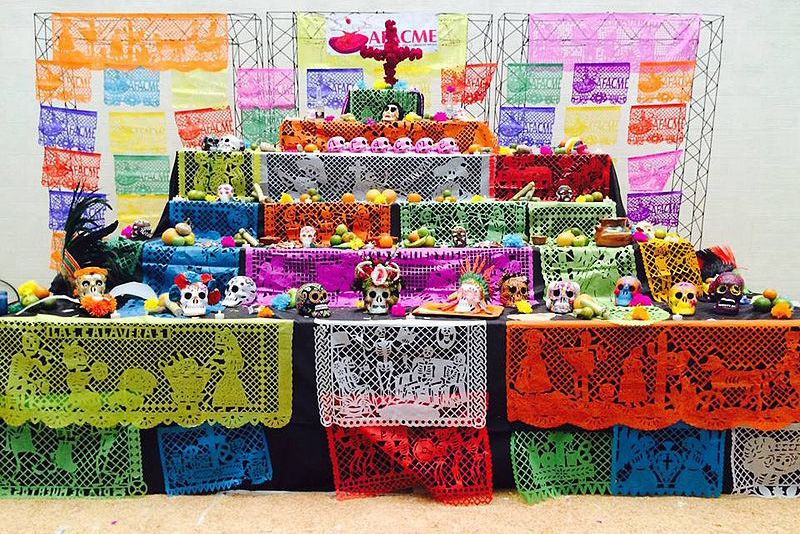
Éste es un altar para las almas que vuelven desde el más allá para visitar a su familia. Encima de todo hay una cruz. Calaveras de varios tamaños llenan los tres estantes abajo. La foto se destaca por los colores vivos, se nota que se trata del país México. Hay también muchas bolas, probablemente frutas, que sirven como ofrendas del Día de Muertos. La manera de que todos los objetos fueron colocados muestra que alguien cuidadosamente pensó en la creación de este altar.
This is an altar for the souls that come back from the great beyond to visit their family. On top, there is a cross. Skulls of many sizes fill the three shelves below. The photo is highlighted by many bright colors, one can tell that it is from the country of Mexico. There are also many balls, probably fruits, that serve as Day of The Dead offerings. The way that all of the objects were arranged shows that someone carefully thought about the creation of this altar.
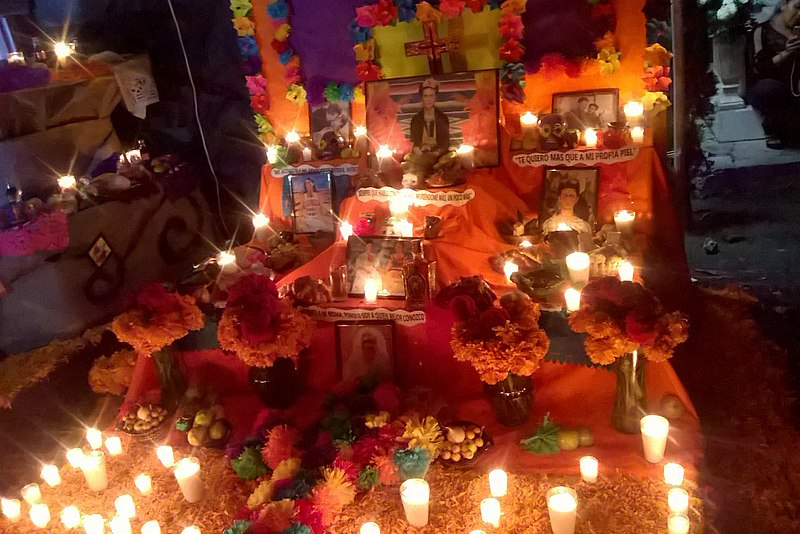
Speechling's "Describe The Image Mode"
If you had some trouble speaking for 30 seconds straight, try the Speechling "Describe the Image Mode", which aims for more concise recordings and you will get feedback from a real language coach afterwards as well! I find it very addictive, which is a good thing, because repetition is of utmost importance for language learning.
All you have to do log-in to Speechling and click "Study" in the menu bar. The two drop-down menus below the study screen allow you to select your language and method, choose Spanish in the first menu and scroll down to the "Speechling Conversations" portion of the second menu, where you will find the "Describe The Image" mode.
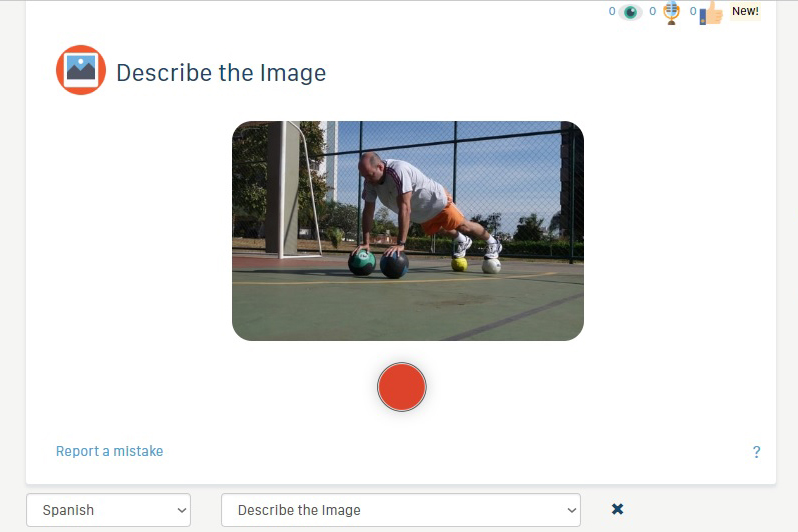
The first screen you will see is a photo and a big red button. Click the red record button and speak into the microphone on your computer, describing in a couple sentences what is depicted.

After that, you can review your recording, change it if you don't think it is a good example of what you can do. If it is representative of your skills, or a really good recording, good job! Send it to an expert for feedback, click "Save for Coaching". I personally think this mode is a great way to break up what can sometimes be a monotonous day of language learning by adding a bit of color. Describing a picture is universally accepted as a great way to practice and that's exactly why it is included on so many standardized Spanish exams.
To learn a language you need to use a wide variety of activities that target different skills. If you find yourself asking, "What is The Day of The Dead?", or some other question that has to do with a Spanish speaking culture, use that interest to fuel your language learning. Learning a language is easier if you study from materials that interest you.
